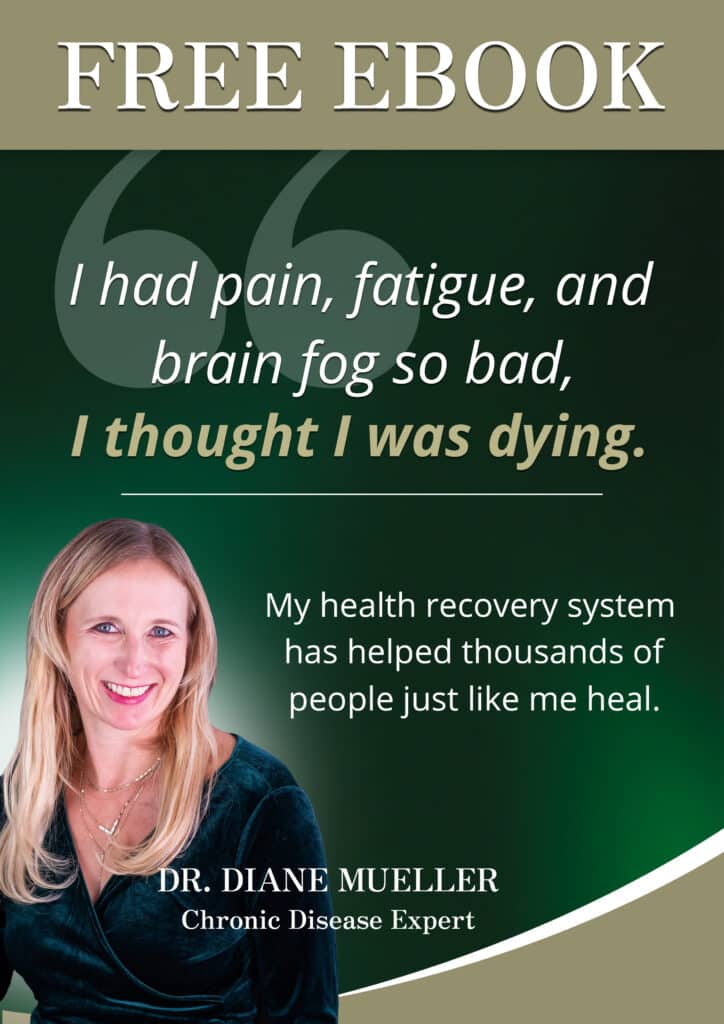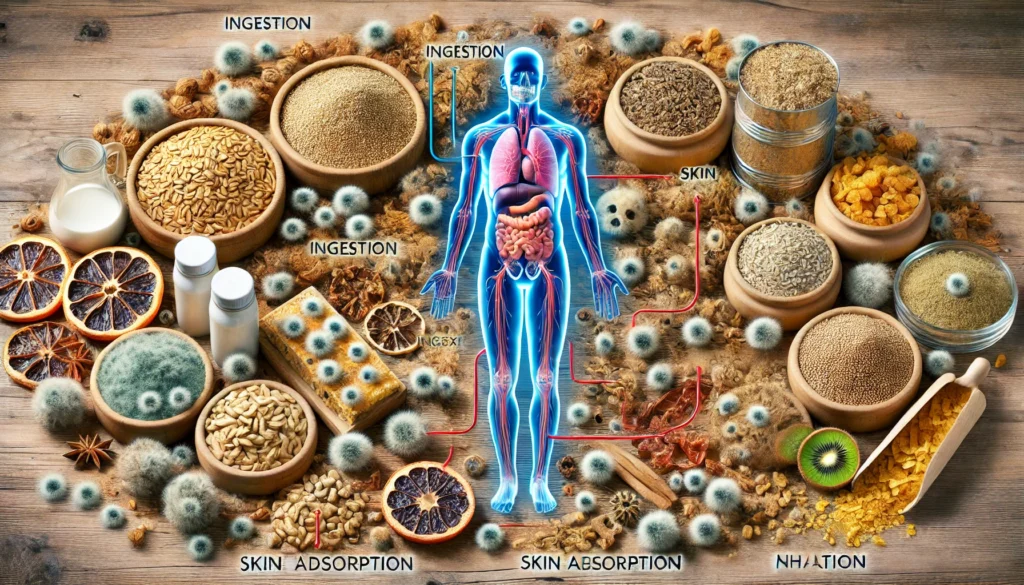
Ever felt like you’re dragging, can’t clear the cobwebs from your brain, or fighting off weird allergies left and right? It could be that you’re wrestling with more than a minor cold, you know. These symptoms could be giving you a nudge about a nasty fungus in your body — more specifically, mold. So, we’ll get into those mold toxicity tests, your first step to recovering from mold illness.
Key Takeaways
Mold toxicity is when you start feeling off because you’ve been exposed to mold. It can sneak up on you when your house or your office is getting a bit too damp, making it a perfect spot for mold to chill out and spit out some stuff called mycotoxins. This can mess you up – from having trouble breathing, acting a bit weird in the head, to your immune system going out of whack. All kinda worrying, if you ask me.
Mycotoxins are produced by fungi, specifically molds, these harmful substances are toxic when they find a way into your body. They enter the body through multiple routes such as ingestion, skin absorption, or inhalation. Various food items like cereals, nuts, spices, and even dried fruits, particularly under warm, humid conditions, can become breeding grounds for these toxins.
Now that you know what mycotoxins are, it’s important to familiarize yourself with a few common types and the potential danger they hold:

Take our Get Well Quiz!
How will you know if you have mold toxicity? The symptoms can vary from person to person. Common warning signs include chronic fatigue, frequent headaches, difficulty concentrating, skin rashes, cough, and respiratory infections. Recognizing these symptoms early can help you take the necessary steps to mitigate the effects of mold toxicity in your life. Remember, knowledge is your first line of defense regarding health.
Testing for Mold Toxicity
Inflammation
Inflammation is one of the typical responses to mold exposure. When you come into contact with mold, your body may signal this through irritation in your nose, throat, and eyes. You may also experience respiratory complications, with symptoms like coughing and wheezing. Don’t overlook these signs, as prolonged exposure can escalate to grave health issues. Effects could range from memory loss and confusion to bouts of anxiety, muscle cramping, and even difficulty breathing.
Mycotoxin testing reveals important information about the presence and quantity of mycotoxins in your body. These tests can be carried out via blood samples, urine tests, or other methods.
Going one step further from immediate responses, genetic testing focuses on underlying predispositions. This method, spearheaded by Dr. Shoemaker, zeroes in on inflammatory markers like TGFB1 and MMP-9, which are linked to mold illness. HLA-DR is a prominently used test to track down the genetic variant. Primarily conducted through a blood test, these indicators hint at potential mold illnesses. While these tests aren’t typically elevated in healthy individuals, increases could suggest a mold-related condition or inflammation from other sources. Hence, they aren’t purely exclusive for mold identification.
In an ideal scenario, one would conduct simultaneous tests—checking inflammatory markers, running genetic tests, and carrying out urinary mycotoxin tests—to comprehensively understand the situation. But, such a comprehensive approach might not be feasible for everyone as these tests typically aren’t covered by insurance. These could be a substantial investment, mainly if you aim for a detailed insight into your health status. The serum markers mentioned earlier sometimes receive insurance coverage if your doctor prescribes them.
Delving further into the specifics of mold examination, it’s important to shed light on the various methods employed in mold toxicity testing—Urine, Blood, Air Quality, and Surface Sample tests. Each method provides a unique lens into mold exposure to help with your health status.
Urinary tests are a fundamental means of detecting the insurgence of mycotoxins in your system. A prime example is the RealTime Labs mycotoxin test, which identifies as many as 16 distinct mycotoxin proficientlys. These include 9 macrocyclic trichothecenes produced by mold fungi. It’s fascinating how the test uses a semi-quantitative competitive ELISA platform, providing results in concise parts-per-billion (ppb) format. This format shows toxins’ existence or absence, plus revealing their levels.
Blood tests work well for measuring the concentration of mold-specific antibodies like IgG in your blood. Have you ever questioned if you’ve been exposed to mold? Or how your immune system reacts after the exposure? Blood tests are your best bet. More than that, they even identify the allergy to particular species of mold.
Have you ever wondered how much mold is in the air you’re breathing? Jogging into air quality testing, these tests help quantify the mold spores in the air. They reveal the count AND the types of mold spores you’re taking in with every breath.
Finally, as mold tends to be a ‘heavy’ molecule and may not get captured by air quality tests – a swab taken from your house’s surface or a piece of tape used to lift off a sample for microscopic examination — gauging the presence and type of mold right from your vicinity.
Ever wondered why some people seem more susceptible to mold illness than others? Science suggests that mold illness is essentially a hereditary condition. Statistics show about 24% of the population carry a distinctive genetic trait that complicates their body’s mold toxin removal process.
Most people’s immune system kicks into action, efficiently clearing out the mold toxins known as mycotoxins. But in people with this genetic anomaly, there’s a glitch. Their immune system doesn’t quite manage to eliminate the toxins. As a result, toxins build up in the body, triggering an array of symptoms.
Understanding your mold spore levels can be the first step to exploring this complex health challenge. High mold spore levels, often associated with damp or water-damaged environments, exacerbate the risk of sustained exposure and subsequent health issues, particularly for those carrying this genetic trait.
Next, you’ve got to consider the mold toxins themselves. Certain mold types are notorious for producing these hazardous compounds. Remember, when you’re dealing with mold toxins, it’s not just about their presence. It’s equally important to take into account their type and concentration levels. Different mold toxins have varying toxic effects, with some potentially causing more harm than others, even at low exposure levels.
An often overlooked factor is the duration and frequency of mold exposure. A brief encounter might not wreak significant havoc, but prolonged exposure could spell disaster for your health. Chronic mold exposure can trigger persistent neurological symptoms, drifting your health downward.
Managing mold-related health issues requires a comprehensive approach. The treatment regimen typically involves medical interventions, measures to minimize mold exposure, dietary modifications, and specific supplements.
One of the cornerstones of managing mold-related health issues is medical intervention. A blood test, for example, can measure your immune system’s response to different mold species, and a skin-prick test can determine whether you’re allergic to mold. Knowing which mold species you’re sensitive to may guide your healthcare provider in customizing your treatment plan.
Reducing mold exposure is essential in treating mold-related health issues. This process begins with identifying and removing mold from your environment. Is the mold covering more than 10 square feet? Do you suspect the mold is hidden behind wallpaper or ceiling tiles? If you answer these questions,h hiringprofessionals for mold rremovalmight be ttime
Adequate ventilation and cleaning are equally important. Open your doors and windows to reduce indoor mold spores, and clean nonporous surfaces with bleach, fungicide, or detergent mixed with water.
Considering your specific situation, consider checking mold levels at home using the HERTSMI Test or ERMI Testing. If the levels are alarmingly high, professional remediation might be warranted, or relocating to a mold-free environment might be your best action.
Your diet plays a vital role in battling mold-related health issues. A low-mold diet, which focuses on eliminating sugar and processed foods, including mold and yeast items, could support your detoxification process.
Beyond dietary modifications, certain supplements may enhance your body’s detoxification process.

One such supplement is N-acetylcysteine, commonly known as NAC. It supports the body’s breakdown of toxins, making them easier to eliminate.
Binders work by trapping and neutralizing mold toxins in your digestive system, preventing their absorption into your bloodstream.
Glutathione, often dubbed the body’s ‘master antioxidant,’ helps neutralize free radicals, and supports liver detoxification processes.
Garlic’s natural antifungal properties could be beneficial, making it a valuable addition to your detoxification plan.
Finally, while enjoying a warm cup of green tea, your body absorbs antioxidants that aid in detoxification and boost your immune system.
Always consult a healthcare provider that treats mold before beginning any new dietary regimen or supplement routine related to mycotoxins. They can guide you based on your health status and the mold species you’re battling.
You can learn more about Mold Illness and the impact of Black Mold below:
Mold exposure can have a drastic negative impact on your health. Various symptoms can alert you to the possibility of mold toxicity. Typically, these include irritation of the nose, throat, and eyes. You might experience coughing and wheezing, with a raspy breath hinting at potential mold complications. Physically, skin reactions like rashes and itching may suggest a mold-induced issue.
Unexplainable respiratory symptoms, especially for individuals with pre-existing conditions like asthma, warrant an extra degree of concern. Long-term contact with toxic mold can escalate to more serious health problems, such as memory loss, confusion, muscle cramping, anxiety, and even difficulty breathing.
Have Mold Illness or suspect you do?
We have helped thousands of people restore their health and quality of life by diagnosing and treating their Mold Illness
References:
Wu, F., Groopman, J., & Pestka, J. (2014). Public health impacts of foodborne mycotoxins.. Annual review of food science and technology, 5, 351-72 . https://doi.org/10.1146/annurev-food-030713-092431.
Pitt, J. (2000). Toxigenic fungi: which are important?. Medical mycology, 38 Suppl 1, 17-22 . https://doi.org/10.1080/MMY.38.S1.17.22.
Wu, F., Groopman, J., & Pestka, J. (2014). Public health impacts of foodborne mycotoxins.. Annual review of food science and technology, 5, 351-72 . https://doi.org/10.1146/annurev-food-030713-092431.
Free Lyme/Mold Webinar: "Why Am I Still Sick?"
Have Lyme Disease or suspect that you do?
We have helped thousands of
people restore their health
and quality of life by diagnosing
and treating their Lyme Disease.
“Dr. Mueller’s approach to medicine is refreshing! There is only so much you can do with western medicine and in my life I was needing a new approach. By addressing the whole body, nutritional diet factors, environmental factors, blood work, and incorporating ideas I had not previously known, I was able to break through with my conditions. I am not only experiencing less pain in my life, but through the process of healing guided by Dr. Diane Mueller, I am now happy to say I have more consciousness surrounding how I eat, what to eat and when things are appropriate. Living by example Dr. Mueller has a vibrancy that makes you want to learn and know more about your body and overall health. I highly recommend her to anyone looking for new answers, a new approach to health, or in need of freedom from pain and limitations.”
-Storie S.
Kihei, HI
Lyme Disease and Mold Illness are Often Misdiagnosed as Fibromyalgia, Chronic Fatigue, Depression,
or Other Illnesses
Have Lyme Disease or suspect you do?
